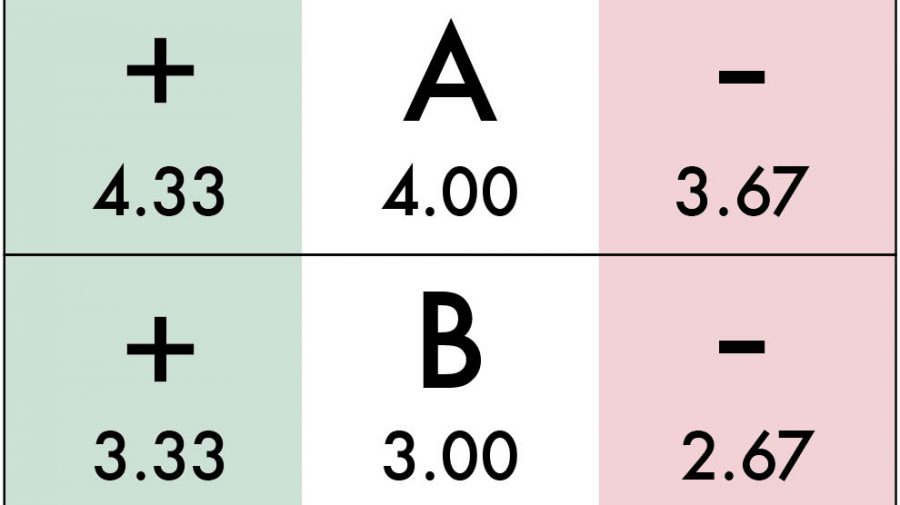 Freshmen accustomed to the five letter grades used in high school may be surprised when mid-term grades roll around this month.
Freshmen accustomed to the five letter grades used in high school may be surprised when mid-term grades roll around this month.
The University is one of nine schools in the Southeastern Conference that uses the plus/minus grading scale, adopted by the Faculty Senate in 1992 as a mechanism for professors to more accurately assess students’ academic performance.
Proponents of the plus/minus scale say a standard ABCDF format fails to reflect the differing levels of academic achievement in college courses.
“Any scheme that ignores significant disparities now crammed into a single, unmediated letter grade does a disservice to the student, the public, and to future employers or graduate schools who rely on us to reflect as accurately as we reasonably can the comparative academic achievement of our students,” said George Wolfe, professor of English, in a statement about the plus/minus scale. “It is intellectually dishonest – and unfair to students – for any faculty to assign academic grades without the option of recording the inevitable qualitative nuances encountered in a classroom.”
The plus/minus scale divides the standard ABCDF format into 13 different grades by allowing for the attachment of a plus or minus to each letter grade except for an F.
The 13-tiered scale’s main purpose is to curb grade inflation, said Raymond White, graduate school department chair of physics and astronomy.
Under the standard ABCDF grade format, a student with a semester grade of 90 would earn the same letter grade of an A as a student with a 95, which would artificially raise the grade point average of the former student.
“The major concern is that students effectively want to be awarded for a grade they have not earned,” he said. “With the standard ABCDF grade divisions, students who are aspiring to make a B minus or an A minus are getting credit for a higher grade.”
The Faculty Senate has given its attention over the years to the advantages and drawbacks that a 13-tiered scale can have on students’ academic transcripts.
In 1998, a Curriculum Revision Task Force of the Faculty Senate released data from the University’s Institutional Research records that suggested the plus/minus scale was hurting students of all academic backgrounds since its inception in 1992.
“Under plus/minus, 125 students in the Fall semester of 1996 would not have graduated because their GPAs were less than a 2.00,” according to the Task Force’s attachment to the Faculty Senate’s agenda. “Under plus/minus, 191 students in the Fall semester of 1996 did not achieve a 3.00 who would have achieved a 3.00 under the standard system. Under plus/minus, 224 students in the Fall semester of 1996 did not achieve a 4.00 who would have a achieved a 4.00 under the standard system.”
Revisiting the issue in 2005, despite these findings, the Faculty Senate voted in favor of retaining the plus/minus scale.
Because the plus/minus scale deters inflated grade point averages, students’ transcripts from the University look more appealing to graduate schools, said Michael George, University registrar, in an emailed statement.
Before this fall semester, Ole Miss retained a straight ABCDF format. Now, Auburn, Louisiana State University and Mississippi State are the only remaining schools in the SEC that do not use a plus/minus scale.
“A 4.0 GPA from a school with the A- (3.667) grade looks better than a 4.0 GPA from a school without the A- grade, since the latter 4.0 may consist entirely of A-‘s, whereas the former 4.0 is straight A’s (and/or A+’s),” George said.









